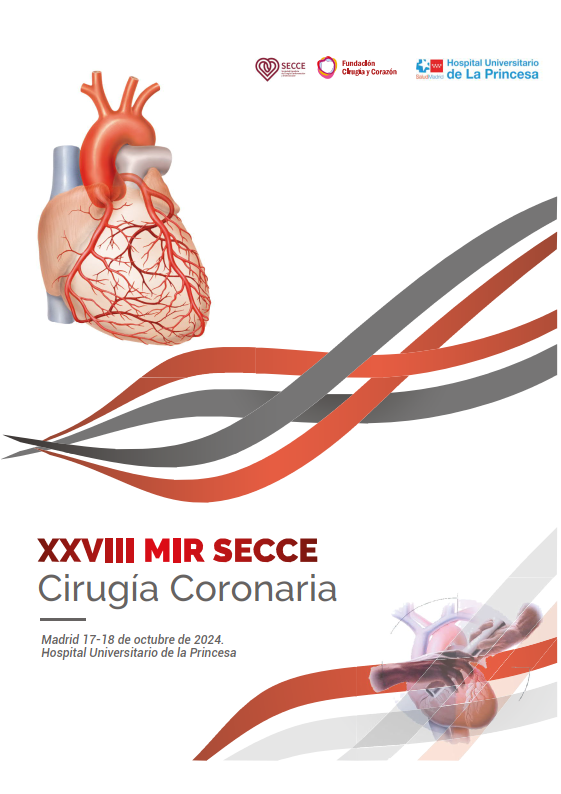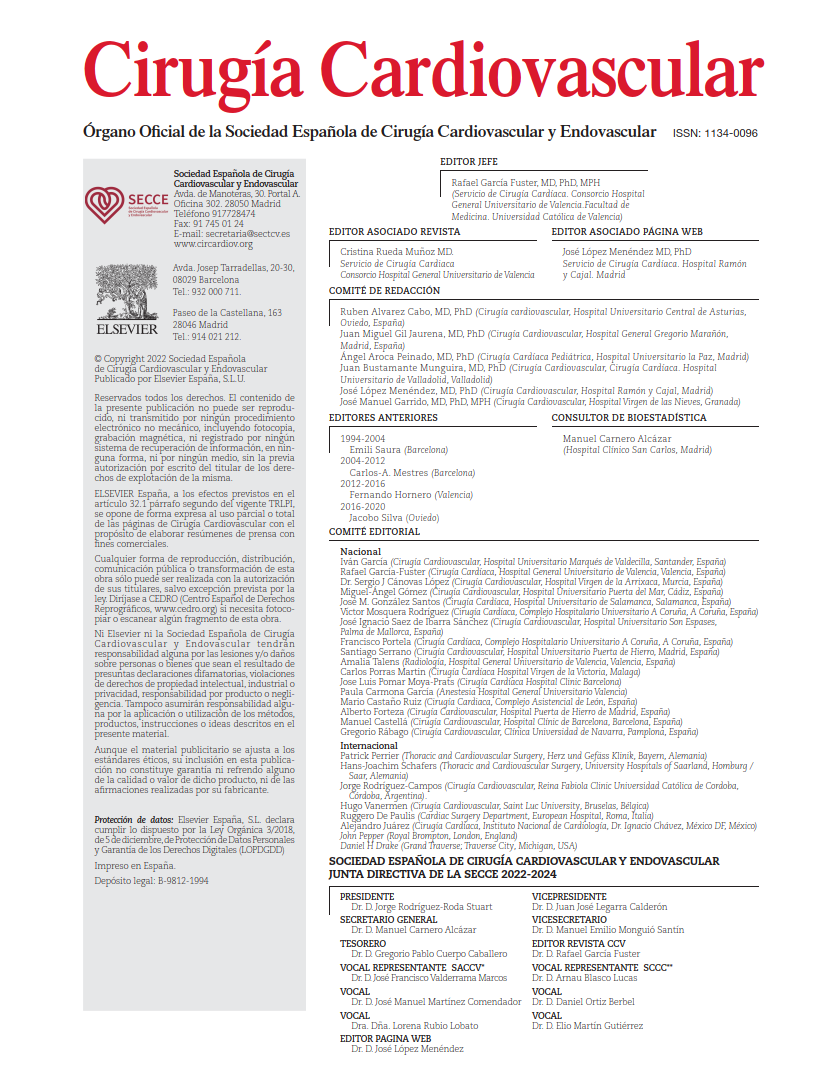Sutureless aortic valve implantation using the Perceval prosthesis has shown favorable clinical outcomes but remains associated with a non-negligible rate of PPI due to postoperative atrioventricular block (AVB). Although improved surgical techniques and experience have partially mitigated this complication, there is still a need for procedural strategies that minimize injury to the conduction system without compromising valve stability or increasing the risk of paravalvular regurgitation. The study under review introduces a straightforward maneuver during valve deployment that displaces the membranous septum toward the left ventricle in order to reduce its contact with the conduction pathway.
The authors describe a modified sutureless aortic valve replacement technique using the Perceval prosthesis that involves actively displacing the membranous septum during deployment to minimize proximity to the conduction tissue. A total of 120 patients undergoing this technique between 2020 and 2024 were retrospectively analyzed and compared with a historical cohort of 45 patients who received the Perceval valve without this maneuver. No cases of inpatient PPI were observed in the modified group, and only one late PPI (0.8%) occurred during follow-up, compared to an overall 8.9% incidence in the historical group. The technique was completed without additional complications, prosthetic migration, or increased paravalvular regurgitation. These findings suggest that this simple, reproducible, and instrumentation-free maneuver could significantly lower the incidence of PPI after Perceval implantation. p = .03.
The authors conclude that displacing the membranous septum during Perceval implantation is a simple, safe, and effective technique that allows for anatomical valve positioning without increasing the risk of paravalvular regurgitation and significantly reduces the need for permanent pacemaker implantation.
COMMENTARY:
The findings reported in this study suggest a clinically meaningful impact. In the cohort treated with the membranous septum displacement technique, no patients required PPI during hospitalization, and only one (0.8%) required it during follow-up, compared to a combined incidence of 8.9% in the historical control group (p = .03). This result is particularly relevant considering that a substantial proportion of patients had established conduction-related risk factors such as right bundle branch block or prolonged PR and QRS intervals. Moreover, no complications attributable to the maneuver were reported, such as valve migration or clinically significant paravalvular regurgitation, supporting the safety profile of the technique.
The strength of this approach lies in its anatomical rationale and technical simplicity. By displacing the membranous septum downward toward the left ventricle during valve deployment, the prosthesis is positioned further from the conduction system—particularly the His bundle, which courses near the junction of the right and noncoronary cusps. Unlike other strategies that aim to avoid postdilation or promote supra-annular positioning, this maneuver preserves annular deployment, maintaining optimal sealing without increasing paravalvular leak. Additionally, it is compatible with standard implantation protocols, does not require additional devices, and does not significantly extend procedural times. Another key advantage is its reproducibility, whether performed through full sternotomy or right anterior thoracotomy.
In practice, the commissure between the right and noncoronary sinuses—corresponding to the location of the membranous septum—is identified intraoperatively. A surgical forceps is used to apply gentle downward pressure on this area toward the left ventricular side. This retraction is maintained while the inflow ring of the Perceval valve is deployed. Once proper leaflet positioning is confirmed below the annulus, the forceps is withdrawn and the outflow ring is released, followed by standard balloon dilation. This anatomically guided and technically straightforward maneuver reduces the risk of conduction system injury without compromising prosthesis position or function. The authors support their description with a remarkably didactic surgical video, clearly illustrating each step of the procedure—strongly recommended viewing for any surgeon interested in this approach.
While the results are promising, some limitations must be acknowledged. The study’s retrospective design and comparison with a historical cohort introduce potential bias. The control group sample size (n = 45) is relatively small, which may affect statistical robustness. Additionally, the mean follow-up was shorter in the modified technique group (16.3 vs. 35.3 months), potentially underestimating late events. The absence of multivariate analysis also limits interpretation of the technique’s independent effect compared to other known PPI risk factors. Furthermore, no external validation or direct comparison with other approaches—such as high prosthesis positioning or thoracoscopic guidance—was performed.
It is not clear whether the authors also modified their sizing strategy during the same period, particularly with regard to avoiding oversizing—a factor that has clearly contributed to reducing PPI rates in other series, including our own. Clarification on this point would add robustness to the interpretation of the observed outcomes. Furthermore, based on our experience at CHUAC, with more than 100 Perceval cases annually for over a decade, we can confidently state that the described maneuver may present practical challenges in certain anatomies. In patients with small aortic roots or narrow annuli, applying downward pressure on the membranous septum is technically demanding. Moreover, valve deployment typically involves the coordinated effort of at least two operators managing the guiding sutures, limiting the availability of additional hands to perform the maneuver precisely and safely.
Finally, there is also concern that active displacement of the membranous septum—specifically in the region of the noncoronary sinus, which is the most frequent site of paravalvular regurgitation—might increase the risk of residual leakage. Although no such increase was reported in the current series, a more detailed analysis would be valuable in future studies.
This study provides a technically simple and clinically applicable solution to a major limitation of sutureless AVR with Perceval—PPI. In an era in which sutureless prostheses offer well-documented advantages in operative times and recovery, minimizing conduction complications without compromising procedural outcomes is a significant advance.
At Cirugía Cardíaca Hoy, we have previously reviewed the evolving clinical performance of the Perceval valve. A meta-analysis published in May 2023 highlighted its midterm durability and favorable real-world adaptation. The SURE registry, featured in July 2023, corroborated these findings with multicenter data. The SURD registry, discussed in March 2024, showed a clear decline in PPI rates after 2017, linked to improved technique and sizing strategies. More recently, the 13-year experience from Leuven, reviewed in June 2024, confirmed the stability and reproducibility of Perceval-based procedures.
Our institutional experience at CHUAC has also been extensive and encouraging. Since 2013, we have implanted more than 1500 Perceval valves. A turning point came in 2017, when we implemented specific adjustments—most notably, avoiding oversizing. As a result, our PPI rate dropped below 5%, compared to earlier rates approaching 10%. In this context, the septal displacement maneuver described here appears to be a valuable addition to further optimize outcomes and reinforce the safety profile of the procedure.
As a surgeon working daily with this prosthesis, I must admit my genuine surprise at the results presented. While the anatomical rationale of the maneuver is undeniable, the magnitude of PPI reduction reported is truly striking. If these outcomes are confirmed in other series, this could represent a major milestone in the evolution of sutureless valve implantation. Until I see similar results in our own patients, I remain cautiously skeptical—but without doubt, the technique deserves close attention and further evaluation.
REFERENCES:
Nakayama T, Nakamura Y, Higuma Y, Higashino A, Inoue N. Push down the membranous septum to reduce pacemaker need: A simple deployment technique in sutureless aortic valve replacement. JTCVS Techniques. 2025;30:48–51. https://doi.org/10.1016/j.xjtc.2025.01.020



